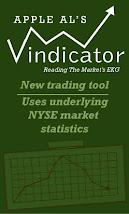Two most plausible Elliott counts at this time:
Alternate #1 (ES daily)

Alternate #1 (ES hourly)

Alternate #2 (ES daily)
Alternate #2 (ES hourly)

A quick look at the LIBOR rate and the TED spread lends credence to the near term bullish scenario. On a macro-economic level LIBOR rates and the TED spread are an indication of liquidity, higher numbers mean less liquidity and lower numbers mean more. Both have formed a top in late December after a run up that started at the end of last July.
TED spread

LIBOR



Thanks for update, Al
ReplyDeleteThe internal breadth as measured in 10 d ma of the A/D and U/D Vol, shows divergence. But those stats as measured in cummulative, show no divergennce. Also, all the other intermediate term risk indicators i use are in bullish mode. Thus, the decline is unlikely to be any thing big.
Thanks Ken. That confirms my guess: relatively quick and shallow correction. Could see a triangle (wedge).
ReplyDelete